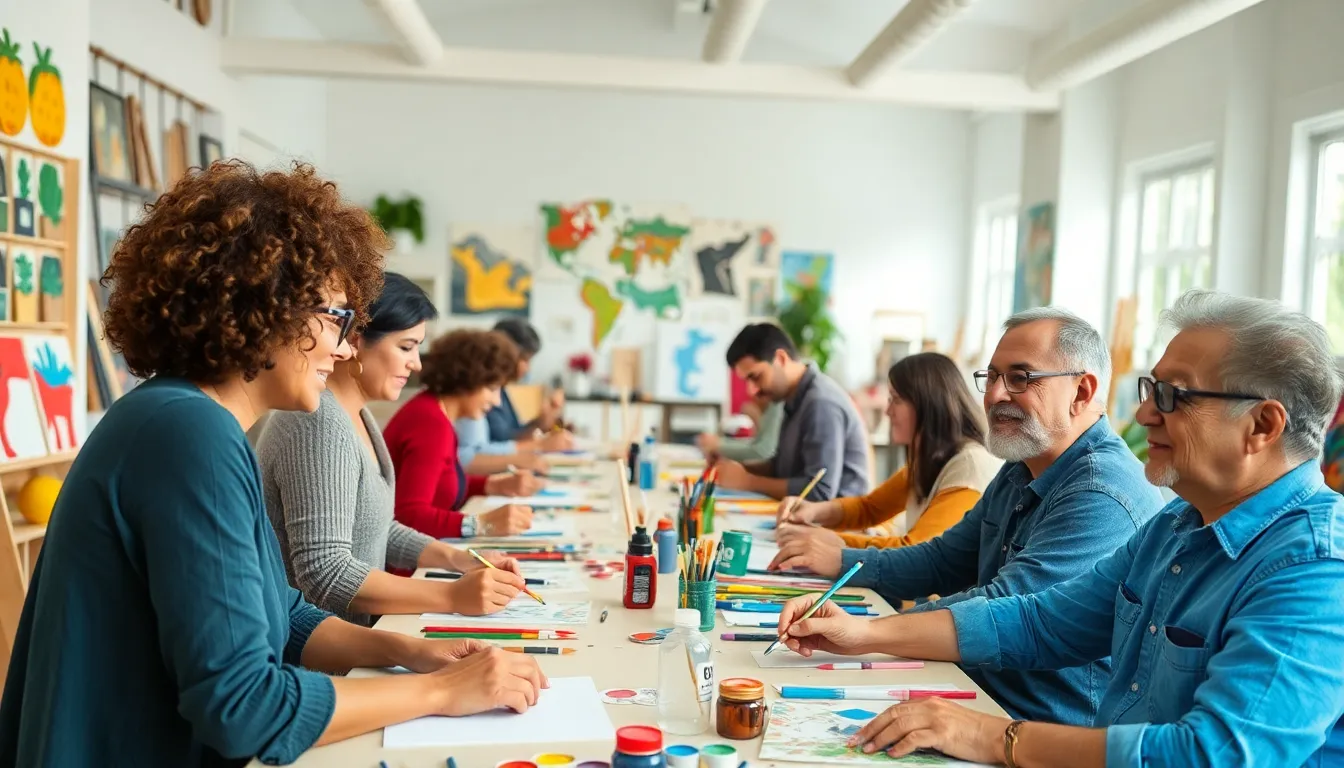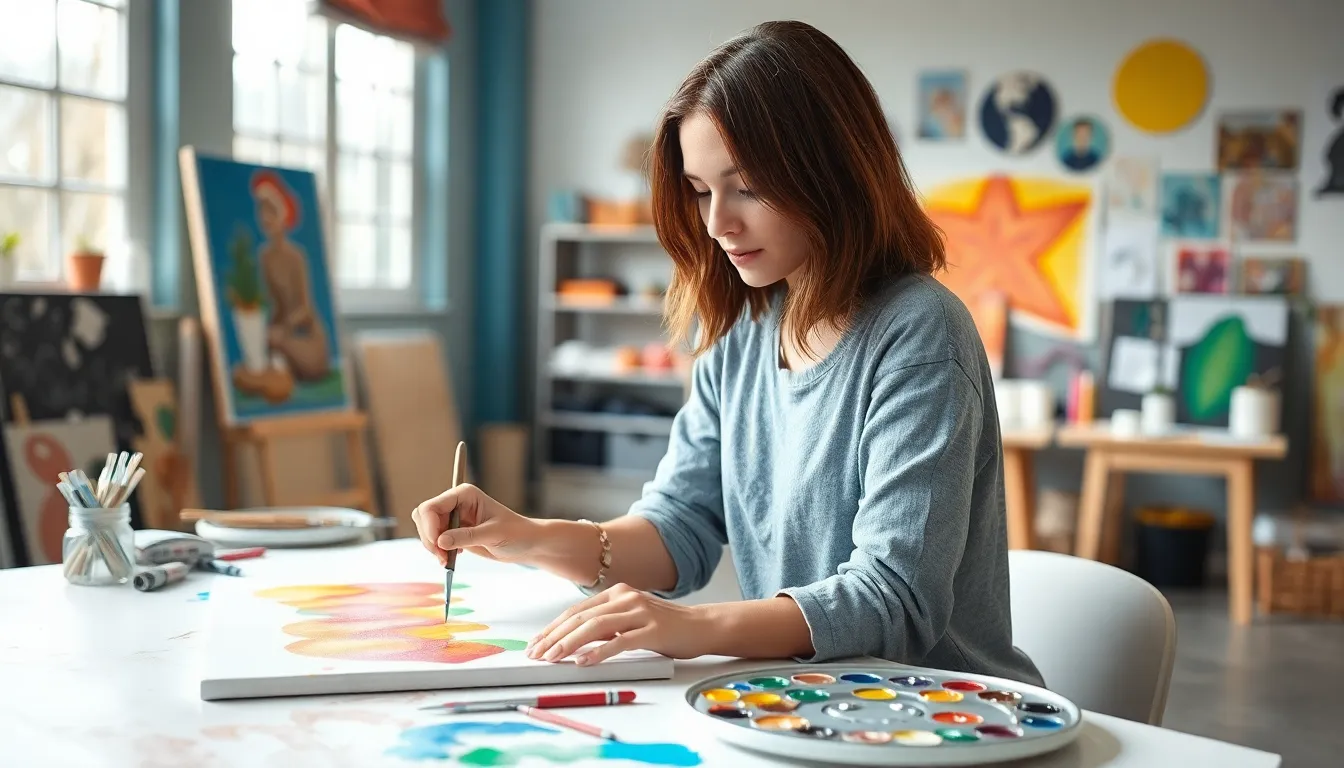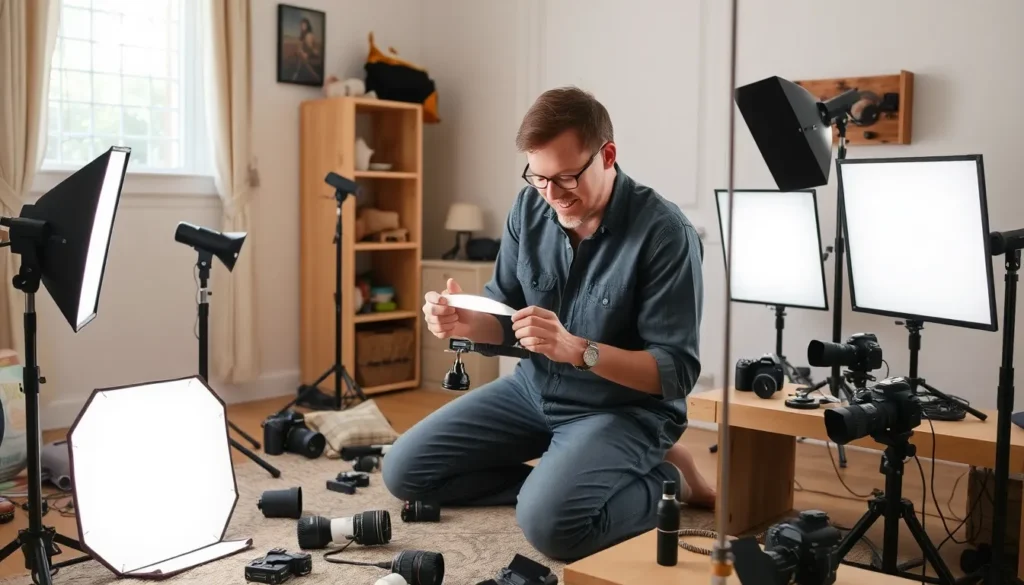Art therapy offers a unique approach to healing that combines creativity with psychological support. This transformative practice allows individuals to express their emotions through various artistic mediums, fostering self-discovery and personal growth. Whether it’s painting, drawing, or sculpting, art therapy provides a safe space for individuals to process their feelings and experiences.
As mental health awareness continues to grow, the benefits of art therapy are gaining recognition. It’s not just for artists; anyone can engage in this therapeutic process to improve emotional well-being. By tapping into the creative mind, individuals can unlock new perspectives and find solace in their artistic expression. In exploring art therapy, one uncovers a powerful tool that promotes healing and connection, making it an essential topic in today’s mental health landscape.
Table of Contents
ToggleOverview of Art Therapy
Art therapy combines creative expression and psychological support to facilitate healing. It allows individuals to express emotions, explore thoughts, and address psychological challenges through artistic mediums such as painting, drawing, and sculpting. Participants experience therapeutic benefits regardless of their artistic skills.
Art therapy enhances self-awareness and encourages personal growth. Techniques used in sessions promote communication beyond words, making it especially valuable for those facing difficulties expressing feelings verbally. Individuals can visualize their internal experiences, leading to insights and resolutions.
Research indicates that art therapy effectively alleviates symptoms of various mental health issues, including anxiety, depression, and trauma. A study found that 75% of participants reported improved emotional well-being after engaging in art therapy sessions. This practice is gaining traction in clinical settings, schools, and community centers, addressing the diverse needs of populations across age groups.
Art therapists typically hold a master’s degree and possess specialized training in both art and psychological principles. Their expertise ensures a safe, supportive environment where creativity flourishes, fostering client empowerment and resilience.
As awareness of mental health expands, art therapy emerges as a versatile resource, accessible to all individuals—whether or not they consider themselves artists.
Benefits of Art Therapy

Art therapy offers numerous benefits that significantly enhance emotional, cognitive, and social dimensions of well-being. This practice supports individuals in navigating their experiences and fostering personal growth.
Emotional Well-being
Art therapy effectively boosts emotional well-being. It allows individuals to express emotions that might be difficult to verbalize. Engaging in creative activities reduces symptoms of anxiety and depression. Research shows that 75% of participants report improved emotional states after such sessions. Art therapy promotes self-acceptance, helps in processing trauma, and enhances resilience in coping with life’s challenges.
Cognitive Development
Art therapy contributes to cognitive development by enhancing critical thinking and problem-solving skills. Participants learn to interpret their artwork, which cultivates analytical abilities and creativity. Utilizing various art techniques encourages mental flexibility, allowing for adaptive thought processes. Focus on creative expression also improves attention spans and promotes cognitive engagement, benefiting memory and concentration.
Social Skills Enhancement
Art therapy facilitates social skills enhancement by providing opportunities for interaction and collaboration. Group sessions foster connections among participants, promoting empathy and understanding. Participants learn to communicate feelings and thoughts through art, reducing feelings of isolation. Engaging with others in a creative environment strengthens interpersonal skills, cultivates teamwork, and builds supportive relationships.
Techniques Used in Art Therapy
Art therapy comprises various techniques that facilitate emotional expression and healing through creative processes. These techniques cater to different preferences and abilities, promoting personal exploration and self-awareness.
Drawing and Painting
Drawing and painting serve as fundamental techniques in art therapy. Participants utilize various media, such as pencils, markers, watercolors, and acrylics, to create visual representations of their feelings. This process allows individuals to explore their emotions non-verbally, providing a release for pent-up thoughts. Art therapists encourage clients to focus on the act of creation rather than the final product, fostering self-acceptance and reducing self-criticism.
Sculpture and Clay Work
Sculpture and clay work offer a tactile dimension to art therapy, enabling participants to manipulate materials to express feelings. Working with clay allows for sensory engagement, enhancing mindfulness and present-moment awareness. The act of molding and shaping provides a unique outlet for stress relief and can symbolize transformation and growth. Art therapists guide clients through this process, helping them connect physical creation with emotional pathways.
Expressive Arts
Expressive arts in art therapy encompass a range of creative forms, including collage, dance, and music. These techniques promote freedom of expression and creativity, allowing individuals to explore their experiences from multiple perspectives. By integrating various art forms, therapists help clients uncover insights and foster a deeper understanding of their emotions. This multimodal approach encourages holistic healing and supports personal growth, enhancing overall emotional well-being.
Applications of Art Therapy
Art therapy finds wide-ranging applications across various settings, providing diverse benefits to individuals. Its versatility makes it an effective tool for mental health treatment, rehabilitation programs, and educational settings.
Mental Health Treatment
Art therapy serves as an effective intervention for mental health issues. It aids individuals coping with anxiety, depression, PTSD, and other emotional disorders. Participants can express complex feelings through creative mediums, facilitating emotional processing. Research highlights that 75% of individuals report improved emotional well-being after art therapy sessions. Licensed art therapists guide clients in a safe environment, fostering self-exploration and promoting resilience.
Rehabilitation Programs
Art therapy plays a critical role in rehabilitation programs, particularly for individuals recovering from addiction or trauma. Creative expression helps clients confront past experiences and fosters coping strategies. Engaging in artistic activities can reduce cravings and enhance emotional regulation. Programs incorporating art therapy often report higher success rates and improved client satisfaction, reflecting the holistic benefits of integrating art into rehabilitation efforts.
Educational Settings
Art therapy is increasingly utilized in educational settings to support students’ emotional and social development. School-based art therapy programs address issues such as bullying, trauma, and learning difficulties. Through art, students develop self-esteem and improve communication skills. Additionally, art therapy fosters inclusivity, allowing children of all abilities to participate and express themselves creatively. This supportive approach contributes significantly to a positive school environment and enhances overall student well-being.
Art therapy stands out as a transformative approach to emotional healing and self-discovery. It empowers individuals to explore their feelings through creative expression, fostering resilience and personal growth. As the understanding of mental health evolves, the importance of art therapy continues to gain recognition across various settings.
With its ability to enhance emotional well-being and promote communication, art therapy is becoming an essential tool for many. Whether in clinical environments or educational institutions, its applications are vast and impactful. Embracing this unique form of therapy can lead to profound insights and a deeper connection to oneself and others.



